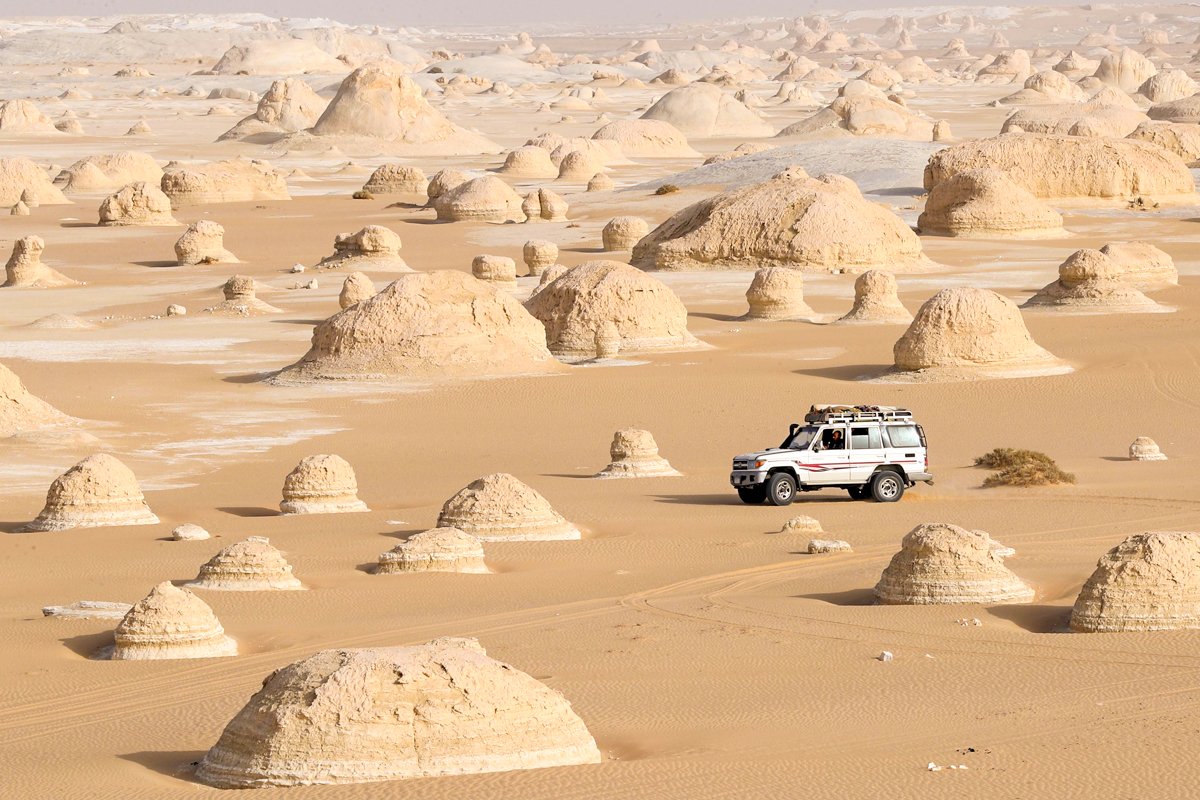Egypt’s Farafra Oasis is a popular tourist destination.
Farafra is the closest oasis to the White Desert, and it is a popular tourist destination. People frequently go to this desert from Bahariya, thereby missing out on the opportunity to view Farafra.
The loss is particularly regrettable given the unique appeal of Farafra.
The Farafronies have seen an increase in their numbers in recent years as a result of the new Valley settlement project.
Wells were dug to provide water to these new farms and the population has expanded dramatically from a few thousand in the 1980s to over 15,000 now.
Many of these individuals now dwell in the numerous hamlets that have sprung up around the main town of Qasr Farafra, which has a population of roughly 5000 people. In response, the number of businesses along the highway as you pass through has increased—which is always a good thing when resupplying when traveling through a desert.
It’s difficult to imagine Farafra in Roman or even Ottoman times as you wander through its narrow streets and low tin-roofed dwellings. At first sight, it seems as if the old mud-walled, originally Roman, a fortress in town has fallen into disrepair, largely washed away by freak rainfall since the 1950s.
The other mud strongholds, most notably in Dakhla Oasis, are deserted, but the Farafra fortress, despite its poor state of preservation, is still inhabited by a handful of people, creating a unique feeling of continuity to the ancient history of the oases, which is otherwise lacking.
If you want to enjoy a memorable trip in Egypt, check out our Egypt Excursions with our certified Egyptologist and Egypt travel guide.
Crafts of Farafra
In contrast to Siwa, which is known for its jewelry, and Dakhla and Kharga, which are known for their pottery, there is no notable craft heritage honored in Farafra, except the spinning of wool, which comes from both camels and sheep. Unusually, both in Egypt and the globe in general, spinning is considered a male activity.
Heavy guys may be seen roaming the main street whirling a spindle and bobbin while they speak with pals and enjoy a glass of mint tea.
Knitting is also a popular pastime in Farafra, as it is among sailors. Men, as well as a few emancipated women, engage in this activity.
Hot Springs are a kind of natural hot spring.
Farafra, like Bahariya, is blessed with an abundance of natural hot springs.
After a long safari across the White Desert, there is nothing more peaceful than soaking in a hot tub to wash away the sand.
Bir Sitta, also known as Well Six, is particularly beneficial for travelers, especially those who are experiencing aches and pains as a result of their first camel riding experience.
The enormous hot bath includes trace amounts of sulfur, which is thought to help in the rehabilitation of muscles and joints.
Farafra has its institutions, although they are composed of individuals rather than physical structures.
On the street, there is Mr. Socks, a relative of the Bedouin Badawi tribe who rides about on a moped with a wooden box full of hand-knitted socks and other necessary Bedouin-style items.
The socks are great for the desert at night and good for padding around oasis hotels when you do not want a stray mosquito going for your ankles.
Don’t miss to check our Egypt Vacation Packages



0 Comment